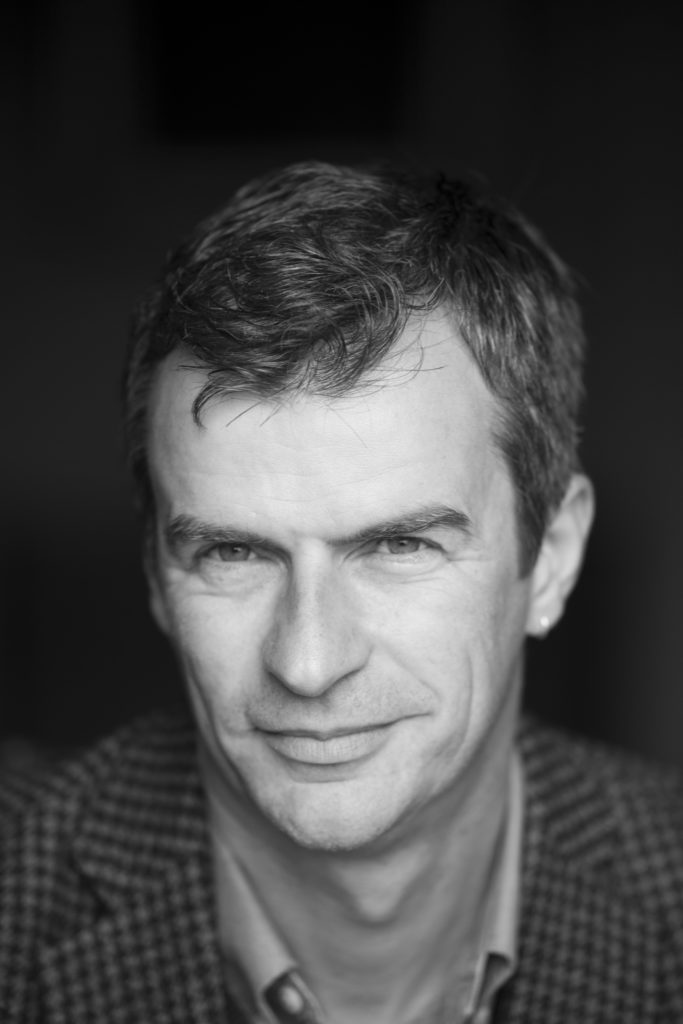You Spin Me Round is an illuminating collection of essays that take elements of music as points of departure
The book includes contributions from Ciaran Carson, Brian Dillon, Peter Geoghegan, Aingeala Flannery, Tabitha Lasley, Declan Long and others. The spread of music runs from O Superman to Shostakovich, and from traditional Irish seisúns to Iggy Pop.
Colin Graham is curator of the Illuminations Gallery at Maynooth University and a farmer in the Dublin Mountains. His essay Second Movement addresses the intensity and unrelenting force of classical musical.

Second movement
IT BEGINS with two hard, definite notes on the violins, played fortissimo (very loud), senza sordino (unmuted), and allegro (fast). The First Movement has just finished – more than twenty novelistic minutes contemplating something dark, anxious, maybe hopeful, but certainly a bit fearful. It has ended with a faltering solo piccolo, the frailest sound in the orchestra. Now the remnants of that tiny sound and its single voice – standing, diminished, alone – are swept away by the force and terror of a music that will not be stopped.
Melodies are passed around the orchestra at frantic speed. The strings play at a sickening off-beat. The snare drum enters with military force. Now it’s like a march – but as if a march were a mood or an insistent pattern of thought – and bass notes are added that come up through your feet. There’s a pause, a gathering and then an explosion of crashes, a series of crescendos, the snare drum is back, the timpani, the brass like an army going into battle, and then another pause and then a brutal conclusive flourish. The whole thing takes about four minutes. It’s terrifying and sickening. It’s buttonholing. You’re trapped in a corner, with no escape. It’s the monologue of a massive ego, with no room for anything but its own echoing mania. It’s on the verge of violence. And yet, it’s thrilling because it’s loud, fast, almost comic, and it sounds a bit, somehow, folkish. It is driven by the knowledge of something dark and irresistible that it cannot look in the eye.
I was a teenager in a house that was not musical. Neither of my parents had been to secondary school beyond the age of fourteen. I was the first on either side of the family to go to university. At grammar school in the first year, we were told to rest our heads on the desks, close our eyes, listen to Grieg’s Morning Mood from the Peer Gynt Suite and imagine a Norwegian sunrise over the fjords.
It was kind of nice music but it sounded worlds away – not just in a different country but from a different class. It was alien to me as a sound and I had no idea what Norway was supposed to look like (years later I’d realise the piece is actually set in the Moroccan Sahara). I did have an inkling that there was something transcendent in the music and that I was being tested on my ability to hear it. I couldn’t hear it.
That felt like a failing in me. But I could hear plenty in the Jam, the Who, Small Faces, Two Tone, and Bob Marley. Mod music made me a dandy of sorts and reading poetry at school, and then out of school, exaggerated the variety of styles I tried out.
As my intellectual life falteringly developed, I was reading Keats in search of a profundity that his words wouldn’t reveal, and dressing like I was in a Merchant Ivory film (not entirely without jeopardy in 1980s Belfast).
And I was listening over and over to the one classical music cassette I’d bought – Beethoven’s Symphony No. 6, Pastoral. I kind of got this. The storm, the cuckoo, the shepherds. The housing estate I lived in ended at our back garden and beyond that there were fields and cows. The smell of slurry and tattered union jacks was probably not what Beethoven had in mind, but I could begin to layer the ‘Pastoral’ over the green fields and I could hear the tunes and feel that it was all very powerful. It still felt like it belonged to the world of the posh kids at school and it couldn’t shake me away from the Kinks. On and off through my adult years I’d listen to classical music. I went to the Proms several times with a cultured girlfriend when I worked for a summer in London. Berg’s Violin Concerto was a highlight – those awful, lonely first notes on open strings – but each time I heard classical music, I left it behind.
Elgar’s Cello Concerto became another passing favourite. And one year, for no particular reason, I decided to go to hear it live at the National Concert Hall. It was played before the interval and it was fine, but nothing like the famous Jacqueline Du Pré recording. Dmitri Shostakovich’s Symphony No. 10 was after the interval. All I knew about him were the Jazz Suites. Slight and silly pieces, it seemed, but pleasant enough. And then everything changed when I entered the sound world of Shostakovich’s intense, jokey, unreadable music, full of the quotation and allusion of someone who can’t or isn’t able to say things directly. That’s when I first experienced the power of Symphony No. 10 in E Minor, op. 93. The programme notes said the movement was ‘a musical portrait of Stalin’, who had died the year in which Symphony was composed. I became
 Colin Graham (picture credit Peter Evers)
Colin Graham (picture credit Peter Evers)

